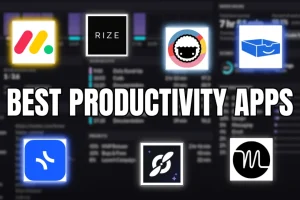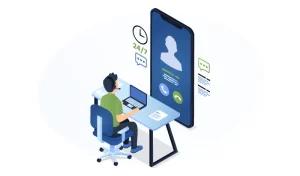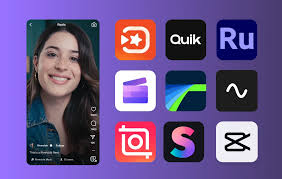If your phone keeps flashing “Storage almost full,” clearing cache is a quick, safe way to reclaim space. Cache files are temporary data apps store to speed things up—deleting them won’t remove your photos, messages, or logins. Below, you’ll find simple, step-by-step methods that work on most Android phones, plus brand-specific shortcuts, smart prevention tips, and FAQs.
Note: Menu names can vary slightly by device and Android version. Where you see a path like Settings > Apps, your phone may show Apps & notifications or App management.
What Is Cache (and Why Clear It)?
- Cache is temporary data (like image thumbnails, map tiles, and video buffers) that helps apps load faster.
- Clearing cache is safe: it doesn’t delete your personal files or accounts.
- After clearing, apps may feel a bit slower the first launch as they rebuild cache—this is normal.
When Should You Clear Cache?
- You’re getting low storage warnings.
- An app is glitchy (crashes, won’t load images, acts sluggish).
- After a big system or app update to remove leftover temporary files.
Step-by-Step Methods to Clear Cache
Step 1: Use Files by Google (Works on Almost Any Android)
Files by Google safely identifies junk and temporary files.
- Open the Files by Google app.
- Tap Clean (bottom).
- Review “Junk files” or “Temporary app files,” then tap Clean.
- Optionally review and remove Large files, Downloads you no longer need, Duplicates, and Unused apps.
- Confirm to free up space.
Tip: Always review before deleting so you don’t remove downloads you still need.
Step 2: Clear Cache for Specific Apps (Most Effective)
Target heavy apps like Instagram, TikTok, Chrome, Maps, Spotify, and YouTube.
- Go to Settings > Apps (or Apps & notifications).
- Tap See all apps (if shown), then select the app.
- Tap Storage & cache (Samsung may show Storage).
- Tap Clear cache. Avoid Clear storage/Clear data unless you’re okay resetting the app.
Quick shortcut: Long-press the app icon on your home screen > App info > Storage & cache > Clear cache.
Step 3: Clear Your Browser Cache
Browsers store large image and file caches. Start with your main browser.
- Chrome: Menu (⋮) > Settings > Privacy and security > Clear browsing data > Time range (Last 7 days is a good start) > check Cached images and files > Clear data.
- Samsung Internet / Firefox: Settings > Privacy (or Privacy and security) > Clear data/history > select Cached images and files.
Step 4: Clean Messaging and Media App Caches Safely
- WhatsApp: WhatsApp > Settings > Storage and data > Manage storage > review and delete large or forwarded media. Then system-level: Settings > Apps > WhatsApp > Storage > Clear cache.
- Telegram: Telegram > Settings > Data and Storage > Storage Usage > Clear cache. Set a Max cache size and Auto-remove old media.
- Instagram/TikTok: They have no in-app cache clear; use Settings > Apps > [App] > Storage & cache > Clear cache.
Brand-Specific Shortcuts
Samsung (One UI)
- System cleaner: Settings > Battery and device care > Storage > Clean now.
- Per app: Settings > Apps > [App] > Storage > Clear cache.
Google Pixel (AOSP-style Android)
- System cleaner: Settings > Storage > Free up space (opens Files by Google).
- Per app: Settings > Apps > See all apps > [App] > Storage & cache > Clear cache.
Xiaomi / Redmi / POCO (MIUI / HyperOS)
- System cleaner: Security app > Cleaner to remove cache/junk.
- Per app: Settings > Apps > Manage apps > [App] > Storage > Clear cache.
OnePlus (OxygenOS)
- System cleaner: Settings > Storage > Clean storage for recommendations.
- Per app: Settings > Apps > App management > [App] > Storage & cache > Clear cache.
OPPO / realme / Vivo (ColorOS / realme UI / Funtouch OS)
- System cleaner: Phone Manager (or iManager) > Clean storage / Junk files.
- Per app: Settings > Apps > [App] > Storage > Clear cache.
Optional: Wipe Cache Partition in Recovery
This is rarely necessary, but it can help after major system updates if you notice glitches.
- Power off your phone.
- Boot into recovery (varies by brand; often Power + Volume Up; some Samsung models require a USB cable connected).
- Choose Wipe cache partition (do NOT select factory reset).
- Reboot.
Only use this if you’re comfortable with recovery menus. If unsure, skip it.
Prevent Caches From Ballooning Again
- Enable Play Store Auto-archive: Play Store > profile > Settings > Automatically archive apps. This frees space from rarely used apps without deleting their data.
- Limit offline downloads: Periodically remove old Spotify/Netflix/YouTube downloads.
- Keep messaging folders tidy: Use Files by Google to review WhatsApp/Telegram media folders.
- Avoid “RAM booster/cleaner” apps: Many are ad-heavy and can hurt battery/performance. Stick to Files by Google or your phone maker’s cleaner.
- Set a reminder: Do a quick cache sweep monthly or when you drop below 10% free storage.
Troubleshooting
- Storage still full after clearing cache? Real files (videos, downloads, WhatsApp media) usually take the most space. Check Files by Google > Clean > Large files and Downloads.
- Clear cache button greyed out? Update the app, restart your phone, and try again. Some system apps manage cache differently.
- Do apps refill the cache quickly? Normal behavior. For lasting gains, remove unneeded media and unused apps; rely on auto-archive and regular large-file reviews.
FAQs
Does clearing the cache delete my photos, chats, or app logins?
No. Clearing the cache removes temporary files only. Do not tap Clear storage/Clear data unless you’re ready to reset the app, which removes settings and offline content and may require re‑signing in.
How often should I clear the cache on Android?
As needed—usually when you get low storage alerts or an app misbehaves. Routine weekly cache wipes aren’t necessary and provide only short-term gains.
Which method frees the most space the fastest?
Use Files by Google’s Clean > Junk files, then manually clear cache for a few heavy apps (Instagram/TikTok/Chrome/Maps). This combo often frees hundreds of MBs in minutes.
Is it safe to use third-party cleaner apps from the Play Store?
Stick to Files by Google or your phone brand’s built-in cleaner (Samsung Device Care, Security/Phone Manager). Many third-party “boosters” add ads, run constantly and may reduce performance.
What’s the difference between Clear cache and Clear storage (Clear data)?
- Clear cache: Deletes temporary files; safe and reversible.
- Clear storage/Clear data: Resets the app to default—logins, settings, and offline downloads are removed. Use only for stubborn issues after backing up.
Article From Taunsa Blogs






